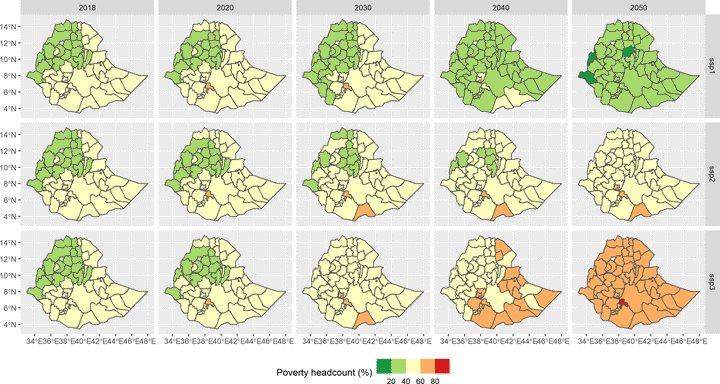Spatial Simulation of Income Dynamics (SSID) model

In this project, we are developing a spatial dynamic microsimulation model, which can provide income, poverty and inequality projections at the subnational scale. The Spatial Simulation of Income Distribution (SSID) model, combines household survey data with subnational projections on key drivers of income, including demographic change, urbanization and shifts in skills and occupation to simulate how the distribution of income might change under different socio-economic futures. To account for structural economic change and the impact of global shocks, SSID also incorporates wage and price projections from a global general computable equilibrium model - MAGNET. To illustrate the model we provide an application to Ethiopia, one of the largest countries in Africa in terms of population size, which is characterized by high poverty levels and deep inequality. We used SSID to project changes in income distribution and the poverty headcount for 60 different zones (administrative level 2 regions) and three different socio-economic scenarios between 2018 and 2050. The scenarios are based on the Shared Socio-economic Pathways, which are often used for climate change assessments and describe sustainable, business-as-usual and fragmented worlds.